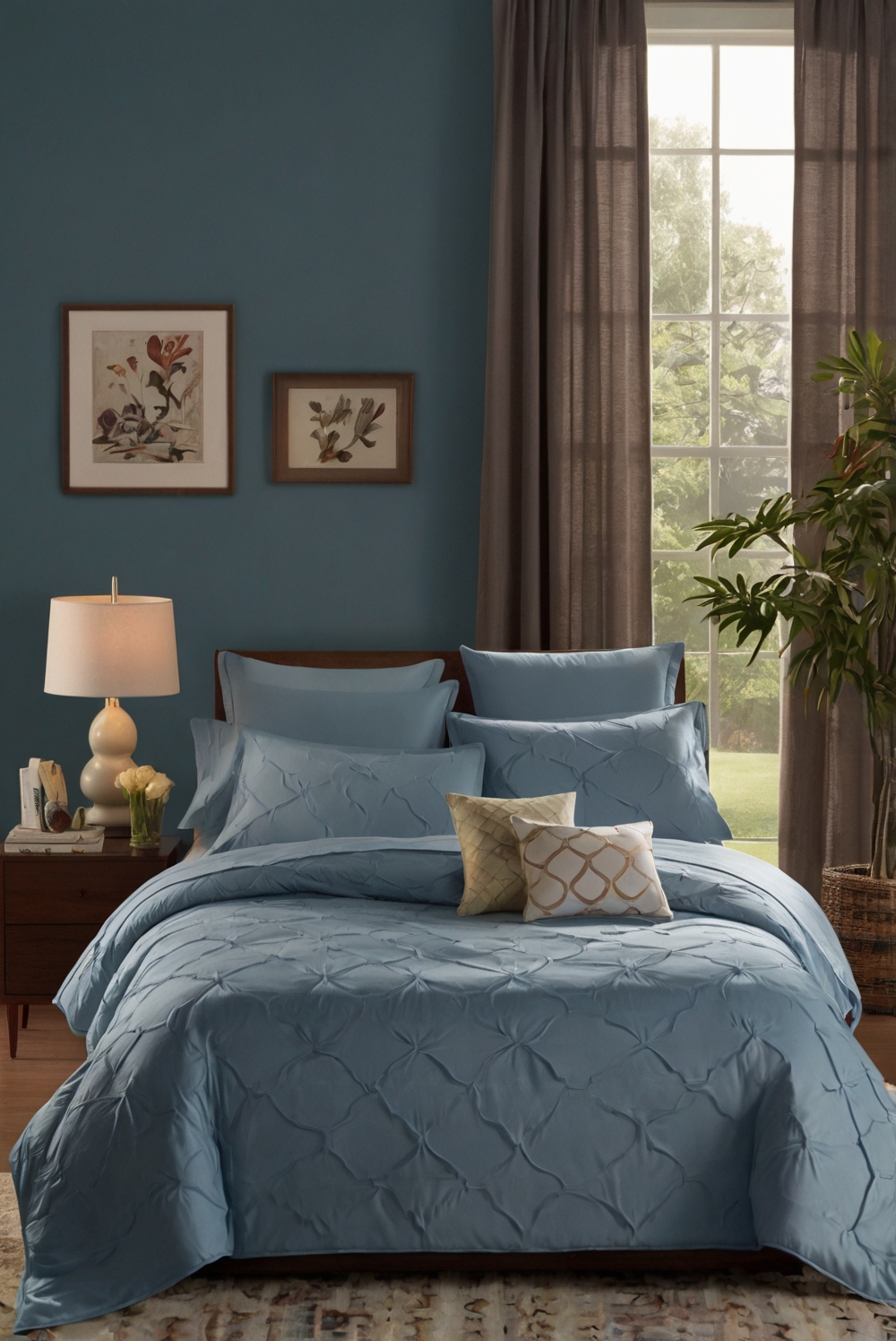Discover the advantages of incorporating microfiber bedding into your bedroom decor. Explore how this luxurious fabric enhances comfort and style in your daily interior design routine.
The advantages of using microfiber bedding in the bedroom include comfort, durability, and easy maintenance. Microfiber bedding is soft to the touch, providing a cozy sleeping environment. It is also long-lasting and resistant to wrinkles and fading, making it a practical choice for everyday use. Additionally, microfiber bedding is easy to care for, as it can be machine washed and dried, saving time and effort on laundry days. To enhance your home decor, choose microfiber bedding in colors that complement your bedroom’s interior design. The smooth texture of microfiber bedding adds a luxurious touch to the space, creating a stylish and inviting atmosphere.
By incorporating microfiber bedding into your bedroom decor, you can enjoy a comfortable and aesthetically pleasing sleeping environment without compromising on quality or style.
When selecting microfiber bedding, consider the thread count and fabric weight to ensure optimal comfort and durability. Experiment with different color palettes to find the perfect match for your bedroom decor, and don’t be afraid to mix and match patterns and textures for a personalized touch. Lastly, regularly wash and rotate your bedding to maintain its quality and keep your bedroom looking fresh and inviting.”
What are the advantages of using microfiber bedding in the bedroom?
Microfiber bedding offers several advantages that make it a popular choice for many people. Microfiber is a synthetic material that is made from finely woven fibers, usually polyester or a blend of polyester and nylon. Here are some of the key advantages of using microfiber bedding:
1. Durability:
Microfiber bedding is known for its durability. The tightly woven fibers make it resistant to wear and tear, ensuring that your bedding will last for a long time. This durability also means that microfiber bedding can withstand frequent washing without losing its quality or softness.
2. Softness:
One of the main advantages of microfiber bedding is its exceptional softness. The fine fibers create a smooth and luxurious feel that is gentle on the skin, providing a comfortable and cozy sleeping experience. This softness is maintained even after multiple washes, making microfiber bedding a long-lasting and comfortable choice.
3. Easy Care:
Microfiber bedding is easy to care for, making it a convenient option for busy individuals. It is machine washable and dries quickly, saving you time and effort on laundry day. Additionally, microfiber bedding is wrinkle-resistant, so it looks neat and tidy without the need for ironing. This easy care routine makes microfiber bedding a practical and low-maintenance choice for the bedroom.
4. Hypoallergenic Properties:
Microfiber bedding is hypoallergenic, making it a great choice for individuals with allergies or sensitive skin. The tightly woven fibers prevent dust mites, pollen, and other allergens from accumulating in the bedding, reducing the risk of allergic reactions and skin irritations. This makes microfiber bedding a healthy and safe option for those with allergies or respiratory issues.
5. Affordable Price:
Another advantage of microfiber bedding is its affordability. Compared to natural materials like cotton or silk, microfiber bedding is often more budget-friendly while still offering high quality and comfort. This makes it an accessible option for anyone looking to upgrade their bedding without breaking the bank.
In conclusion, microfiber bedding offers a range of advantages that make it a popular choice for many consumers. From durability and softness to easy care and hypoallergenic properties, microfiber bedding provides a comfortable and practical bedding solution for the bedroom. Its affordability also makes it an attractive option for those looking to upgrade their bedding without overspending. Consider these benefits when choosing bedding for your bedroom to enjoy a cozy and restful night’s sleep.
1. How does microfiber bedding benefit individuals with allergies?
Microfiber bedding is hypoallergenic, which means it is resistant to dust mites, mold, and other allergens. This is especially beneficial for individuals with allergies or sensitive skin. The tightly woven fibers prevent allergens from settling in the fabric, reducing the risk of allergic reactions and providing a more comfortable sleep environment. Studies have shown that using microfiber bedding can significantly reduce allergy symptoms and improve overall sleep quality for allergy sufferers.
2. What makes microfiber bedding a popular choice for warmth and comfort?
Microfiber bedding is known for its softness and warmth, making it a popular choice for cold winter nights. The tightly woven fibers trap heat close to the body, providing insulation and keeping you warm throughout the night. Additionally, microfiber bedding is lightweight and breathable, allowing for better air circulation and temperature regulation. This combination of warmth and comfort makes microfiber bedding an ideal choice for a cozy night’s sleep.
3. How does microfiber bedding compare to other types of bedding materials?
Compared to traditional cotton bedding, microfiber bedding offers several advantages. Microfiber is more durable and resistant to wrinkles, shrinking, and fading, making it a long-lasting investment. Additionally, microfiber is softer and smoother than cotton, providing a luxurious feel against the skin. Microfiber bedding is also easier to care for, as it dries quickly and requires minimal ironing. Overall, microfiber bedding offers a superior combination of comfort, durability, and ease of maintenance compared to other bedding materials.
4. What are the environmental benefits of using microfiber bedding?
Microfiber bedding is often made from recycled polyester, making it a more sustainable choice compared to bedding made from natural fibers like cotton. By using recycled materials, microfiber bedding helps reduce the demand for new resources and minimizes waste in landfills. Additionally, microfiber bedding requires less water and energy to produce than cotton bedding, further reducing its environmental impact. Choosing microfiber bedding can be a conscious decision to support eco-friendly practices and reduce your carbon footprint.
5. How can I care for my microfiber bedding to prolong its lifespan?
To keep your microfiber bedding in top condition and extend its lifespan, it’s important to follow proper care instructions. Machine wash your microfiber bedding in cold water with a gentle detergent to prevent damage to the fibers. Avoid using bleach or fabric softeners, as these can degrade the quality of the fabric. Tumble dry your microfiber bedding on low heat or air dry to prevent shrinkage and maintain its softness. Additionally, regularly rotating and flipping your bedding can help distribute wear evenly and prevent premature wear and tear. By following these care tips, you can enjoy your microfiber bedding for years to come.




